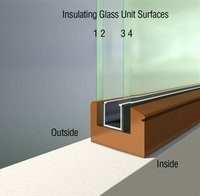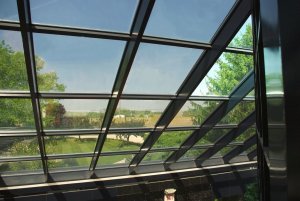What Makes Glass Energy Efficient?

Glass makes for great outdoor views, whether it is falling snow or summer fun. Unfortunately, windows made with old, inefficient glass can make you pay for those views, allowing up to 30 percent of the furnace heat or air-conditioning you pay for to escape from your home. That is literally like throwing money out the window!
Given the recent streak of cold weather across the country, now is a good time to examine why it pays to invest in windows made with today’s sophisticated and energy-efficient, low-e glass.
By itself, a single pane of glass is not very energy efficient. Luckily, most windows these days are built as insulating units consisting of two or even three panes of glass, separated by spacers and gas-filled cavities. Together, these components provide a robust barrier between the indoors and outdoors, which makes it easier and significantly less expensive to maintain conditioned indoor environments.
Low-e glass is part of that equation, too. These products feature a metallic coating that is applied to a glass surface inside the insulating unit. The coating reflects unwanted solar heat from your home in the summer months, and traps furnace heat inside it in the winter.
In cold climates, like ours in Michigan, low-e coatings work best when applied to the inner surface of the inside pane of the insulated unit (surface 3 in the image). In a warm climate, such as Texas or Florida, the low-e coating is usually applied to the inner surface of the outside pane (surface 2).
Want to learn more? We’re here to help! Leave a comment or give us a call at 616.662.7216.




